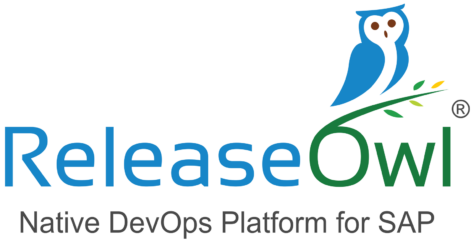SAP Smart Sensing
Filter By
Browse By
- SAP Analytics and AI
- SAP Application Development and Integration
- All SAP Application Development and Integration
- SAP ABAP
- SAP ABAP Development Tools
- SAP ABAP Test Cockpit
- SAP API Management
- SAP BAPI
- SAP Basis
- SAP BRF
- SAP Business Application Studio
- SAP CMS
- SAP Design Studio
- SAP Development Tools
- SAP DevOps
- SAP EAI
- SAP EDI
- SAP Extension Suite
- SAP Fiori
- SAP Fiori Elements
- SAP Integration Suite
- SAP Low Code Application Development
- SAP Low Code Automation
- SAP Netweaver
- SAP Release Management
- SAP UI5
- SAP Web Application Server
- SAP Web IDE
- SAP Business Process Management
- SAP Center of Excellence
- SAP CIO
- SAP Customer Experience
- SAP Data and Data Management
- All SAP Data and Data Management
- SAP BW
- SAP BW/4HANA
- SAP Crystal Reports
- SAP Data Archiving
- SAP Data Center
- SAP Data Governance
- SAP Data Integration
- SAP Data Migration
- SAP Data Quality
- SAP Data Services
- SAP Data Strategy
- SAP Data Visualization
- SAP Data Warehouse Cloud
- SAP DMS
- SAP Document Control
- SAP EIM
- SAP ETL
- SAP ETL Tools
- SAP HANA
- SAP HANA Administration
- SAP HANA Deployment Infrastructure
- SAP HANA Studio
- SAP Master Data
- SAP Master Data Governance
- SAP MDM
- SAP Enterprise Architect
- SAP Enterprise Asset Management
- SAP ERP
- SAP Finance
- All SAP Finance
- SAP Accounting
- SAP AR AP
- SAP Asset Accounting
- SAP Billing Systems
- SAP BPC
- SAP BRIM
- SAP Cash Management
- SAP Central Finance
- SAP Controlling
- SAP COPA
- SAP Cost Center Accounting
- SAP Currency Risk
- SAP e-invoicing
- SAP FICO
- SAP Finance Automation
- SAP Advanced Financial Closing
- SAP Financial Consolidation
- SAP Financial Planning
- SAP FX Risk
- SAP General Ledger
- SAP Global Tax Management
- SAP Hyperion
- SAP Order to Cash
- SAP Payment Processing
- SAP Profitability Analysis
- SAP Rebate Management
- SAP S/4HANA Finance
- SAP SWIFT Compliance
- SAP Treasury Management
- SAP Universal Journal
- SAP Governance Risk and Compliance
- SAP Human Capital Management
- SAP Intelligent Technologies
- SAP Platform and Technology
- All SAP Platform and Technology
- SAP Business Technology Platform
- SAP Cloud
- SAP Cloud Connector
- SAP Cloud Integration Platform
- SAP Cloud Migration
- SAP Cloud Platform
- SAP Cloud Providers
- SAP Cloud Strategy
- SAP Digital Signature
- SAP Container Platform
- SAP HANA Enterprise Cloud
- SAP Digital Asset Management
- SAP Smart Forms
- SAP HEC
- SAP Digital Integration Hub
- SAP Hyperscalers
- SAP Infrastructure
- SAP Messaging
- SAP Quality and Testing
- SAP Security
- SAP Spend Management
- SAP Supply Chain Management
- All SAP Supply Chain Management
- SAP APO
- SAP Asset Management
- SAP Business Network
- SAP Digital Manufacturing Cloud
- SAP Digital Twin
- SAP EWM
- SAP IBP
- SAP Inventory Management
- SAP Label Printing
- SAP Logistics
- SAP Manufacturing
- SAP Manufacturing Automation
- SAP MES
- SAP MII
- SAP MM
- SAP MRO
- SAP MRP
- SAP Order Management
- SAP Plant Maintenance
- SAP PLM
- SAP Production Planning
- SAP S&OP
- SAP SD
- SAP SPM
- SAP Supply Chain Planning
- SAP Track and Trace
- SAP Transportation Management
- SAP System Administration
What Is Smart Sensing?
Sensors have been used in industry for decades to capture specific parameters like temperature. Smart sensors are an evolution of legacy sensors and leverage recent advances in technologies like Internet of Things (IoT) and cloud. Unlike a traditional sensor, a smart sensor can perform advanced tasks such as data conversion, data processing, analytics, and communicating with external devices and the cloud. Many smart sensors can do self-assessment and self-calibration, making them an essential part of digital twins. The data from smart sensors can be leveraged for a plethora of applications, like predictive planning.
What Is Smart Sensing?
Sensors have been used in industry for decades to capture specific parameters like temperature. Smart sensors are an evolution of legacy sensors and leverage recent advances in technologies like Internet of Things (IoT) and cloud. Unlike a traditional sensor, a smart sensor can perform advanced tasks such as data conversion, data processing, analytics, and communicating with external devices and the cloud. Many smart sensors can do self-assessment and self-calibration, making them an essential part of digital twins. The data from smart sensors can be leveraged for a plethora of applications, like predictive planning.
What Is SAP Smart Sensing?
Smart sensing is a capability within the SAP Internet of Things offering that leverages SAP Fiori to identify and track physical objects maintained in SAP S/4HANA. The identification and tracking is done primarily by scanners and smart sensors. Compared to classic IoT scenarios, the SAP smart sensing approach brings the following advantages:
- Tracking of single events rather than recording of continuous data streams significantly reduces the amount of data to process.
- Using auto-ID tags instead of sensors reduces costs.
- Tagging of single items that are part of a delivery or a handling unit allows for a finer granularity and higher precision of the data collected.
While the applications can span multiple functions, a key function that can leverage smart sensing extensively is supply chain. With the help of smart sensors and other technologies like artificial intelligence and machine learning, organizations can build smart, kinetic supply chains, as highlighted in this webinar.
Key Considerations for SAPinsiders
SAP smart sensing is a robust capability to help organizations build components of the intelligent enterprise. However, there are certain key aspects that SAPinsiders need to keep in perspective when embarking on this journey:
Understand the difference between conventional and smart sensors. As mentioned earlier, sensors have been used in industry for a while, but smart sensors take this capability much further. Understanding the “smart” aspect of sensors will allow you to understand where and how to use them.
Think beyond just tracking. While there is no doubt that smart sensors can help track flows or processes in real time, the data often captured by these sensors can be used extensively for generating additional insights. Key advanced analytics approaches like simulation, optimization, and predictive analytics can be leveraged using this data to generate new insights for organizations.
Think end-to-end. A powerful capability of smart sensors is that they can be used to build end-to-end solutions, specifically in process intense functions like supply chains. You can design end-to-end solutions to make your enterprise more resilient and agile.
492 results
-

Meet Demand-Driven Scheduling Requirements with SAP ERP and SAP APO: Q&A on When to Use Which for Enhanced Supply and Production Planning
Reading time: 31 mins
SAP ERP and the production planning and detailed scheduling (PP/DS) and supply network planning (SNP) components of SAP Advanced Planning and Optimization (SAP APO) offer functionality that can be utilized in a variety of design options to optimize production plans and provide greater visibility into your inventory management, but when do you use which? Especially...…
-

- SAP Supply Chain Management
 Premium
Premium
Building a Digital Framework for the Supply Chain
Reading time: 8 mins
Companies need to align their strategic and operations plans and find ways to maximize their working capital investments to ensure that they get the products they want when they want them. They also need to orchestrate the transition from planning to execution, remove fixed lead times, and balance agility and efficiency. With fast and responsive…
-

 Premium
Premium
Control Your Output Messages with PPF Technology
Reading time: 13 mins
Post Processing Framework is a technology introduced with Web Application Server that triggers a workflow for message output. Here’s how to configure it with just a few simple steps. Key Concept Post Processing Framework allows you to process actions for different output types such as printing, sending emails, or faxing using Smart Forms. Since SAP...…
-
-

Talk to Me, Goose — UX in a Bot World
Reading time: 5 mins
Top Gun is one of my all-time favorite movies. My parents recorded a TV broadcast on VHS tape and I wore it out. It’s got everything you could possibly want in an 80s flick: two Toms (Cruise and Skerritt), popped collars on polo shirts, and a completely awesome Kenny Loggins soundtrack. If you hear the…
-

Staying Ahead: Navigating Constant SAP Changes with Smart Testing
Reading time: 3 mins
Elite athletes today excel through advanced training and technology, mirroring the transformation in enterprise technology with SAP S/4HANA Cloud’s frequent updates, which necessitate robust test automation for businesses to adapt swiftly and ensure continuity amidst constant changes.
-

From Transactions to Data Management, the Blockchain Can Have a Huge Impact in Establishing Smarter Cities
Reading time: 4 mins
The blockchain has made a big impact on financial industries, but it can also have a positive effect on data and transactions across smart cities. Membership Required You must be a member to access this content.View Membership LevelsAlready a member? Log in here
-

Why Food Traceability Systems Are No Longer Optional
Reading time: 11 mins
The question is no longer whether traceability matters—it’s how well your system supports it. And in a world where trust and transparency are paramount, investing in integrated, future-ready traceability software is not just a smart move. It’s a vital one. Membership Required You must be a member to access this content.View Membership LevelsAlready a member?…
-
-

 Premium
Premium
SAP E-Recruiting Part 2: Eight Tips to Ensure a Smooth Implementation
Reading time: 10 mins
Use these eight planning and configuration tips when you implement SAP E-Recruiting. Key Concept A sound project management approach with sufficient lead time is required for implementation of SAP E-Recruiting. It takes more time to plan the customizing and obtain buy-in than it does to actually perform the configuration. Note SAP E-Recruiting, which manages end-to-end...…
-

Enhance and Simplify Your Data Warehousing with SAP BW 7.5: Live Q&A on the Newest Features and Functions of SAP BW Powered by SAP HANA
Reading time: 44 mins
During this live Q&A session, Dr. Bjarne Berg, principal at PwC and speaker at HANA 2016, discussed the new capabilities of the 7.5 edition of SAP BW powered by SAP HANA, and answered readers’ questions on what features have been extended from earlier releases and how to leverage the latest release to improve productivity and...…
-

Integrating ABAP-Based Processes into Smart Factories
Reading time: 14 mins
The Internet of Things (IoT) is transforming modern factories, enabling new “smart factory” scenarios where machines and humans can collaborate in unprecedented ways. SAP lays the foundation for its customers to take the next step toward this new paradigm, known as Industry 4.0, with support for IoT built into SAP HANA Cloud Platform, and as…
Become a Member
Unlimited access to thousands of resources for SAP-specific expertise that can only be found here.
Become a Partner
Access exclusive SAP insights, expert marketing strategies, and high-value services including research reports, webinars, and buyers' guides, all designed to boost your campaign ROI by up to 50% within the SAP ecosystem.
Upcoming Events
-

SAPinsider Technology Executive Forum
December 02 - 03, 2025
Phoenix, Arizona
United States
View Event
Related Vendors
Your request has been successfully sent

